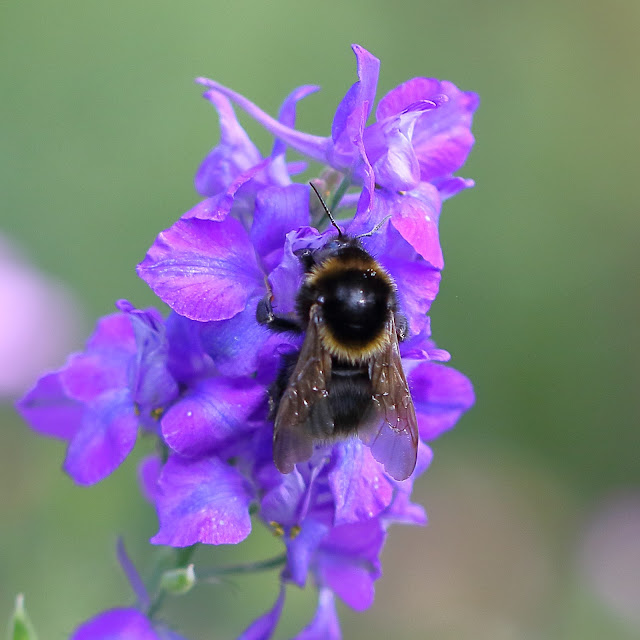8th July 2023 - the flowers are blooming nicely in the garden at present, and Andy M noticed a good number of bees on the flowers of allium, lavender, verbena and salvia in particular. With the help of a few photos and a field guide, he found not only the more common species such as Buff-tailed Bumblebee, White-tailed Bumblebee and Red-tailed Bumblebee, but also others like the Garden Bumblebee with its twin banded thorax, the Common Carder Bee with its ginger thorax and stripy abdomen, and a Field Cuckoo Bumblebee which can be almost totally black with a shiny black abdomen, and is parasitic laying its eggs in the nests of the Common Carder Bee.
We found the 'Pocket Guide to Bumblebees' by Richard Lewington and published by Bloomsbury, was very helpful in identifying the various species.
Buff-tailed Bumblebee - note the thin buff-coloured band
between the black and white bands of the abdomen
Buff-tailed Bumblebee
White-tailed Bumblebee - note the pure white end to the abdomen,
with the yellow bands being slightly paler than the Buff-tailed.
Garden Bumblebee - with a yellow band at each end of the thorax,
and a white end to the abdomen.
This one may be the melanistic form which is generally slightly darker
Garden Bumblebee
Red-tailed Bumblebee - a smaller worker, with no yellow band
on the abdomen and a reddish terminal band.
Common Carder Bee - a smaller 'fluffier' bee,
with a ginger thorax and a noticeably striped abdomen.
Common Carder Bee
Common Carder Bee
Field Cuckoo Bumblebee - which can be variable in colour,
and like this one can be almost completely black.
As with all Cuckoo Bumblebee, the abdomen is shiny and the wings tinted.
Field Cuckoo Bumblebee











No comments:
Post a Comment